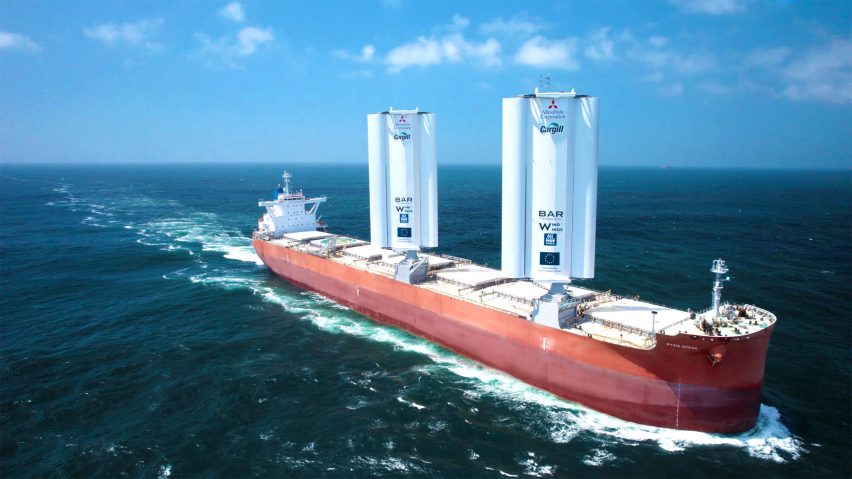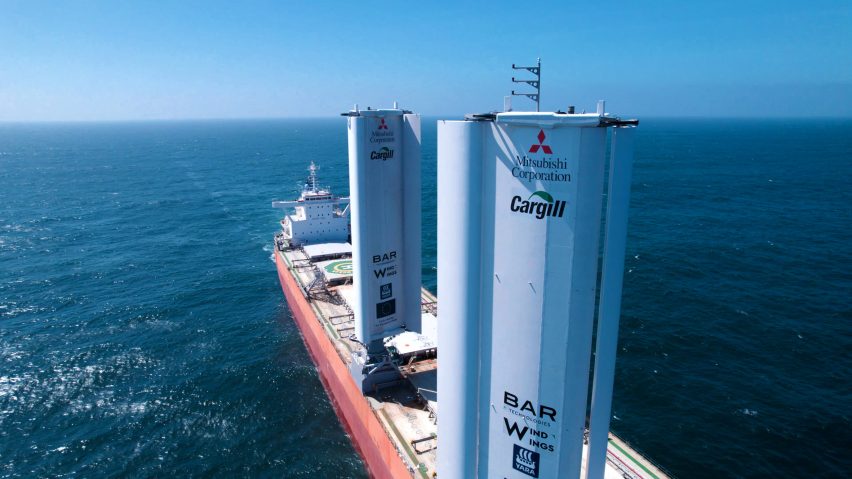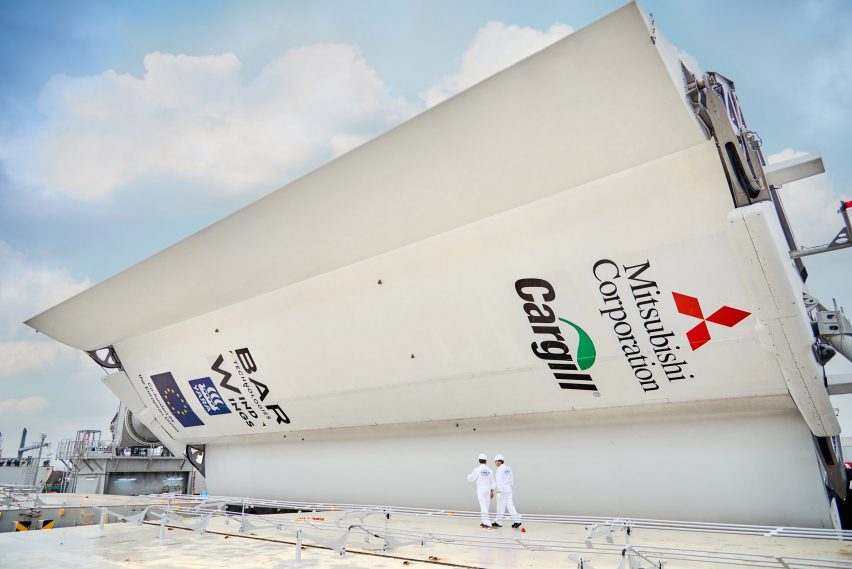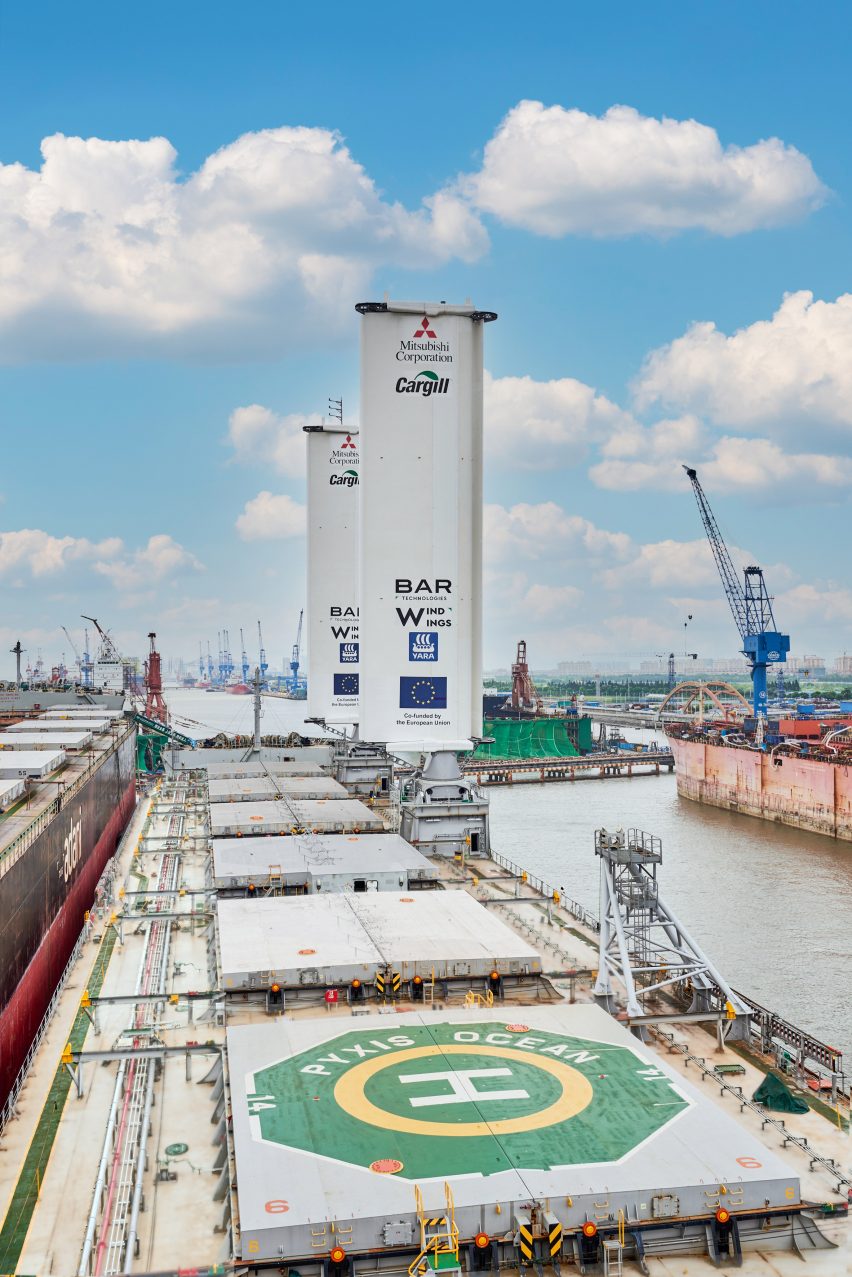Pioneering wind-powered cargo ship charts course for greener shipping
A Mitsubishi Corporation cargo ship has embarked on its first wind-powered voyage after being retrofitted with two rigid 37.5-metre-tall sails, in what could mark a crucial step towards decarbonising the maritime industry.
The Pyxis Ocean freighter, which can carry close to 81,000 tonnes of cargo, set sail from Singapore on Monday.
Now, the ship is making its way to Brazil using steel and fibreglass WindWings, created by engineering firm BAR Technologies and Norwegian company Yara Marine Technologies.

The automated sails pivot to make use of the wind to blow the ship along so it does not solely rely on its engine. This reduces fuel consumption by up to 30 per cent and thereby reduces emissions, according to the manufacturers.
Combined with zero-emission fuels, they argue the technology could help to decarbonise the shipping industry, which is responsible for transporting over 80 per cent of all internationally traded goods by volume while relying almost entirely on fossil fuels.
"Reductions in fuel consumption via the exploitation of wind energy as a free fuel generates the two-fold benefits of lower fuel costs and lower emissions, propelling the global fleet affordably on its track to decarbonisation," said BAR Technologies CEO John Cooper.

Much like wind turbines, the rigid sails are made from steel and fibreglass. They consist of three elements – a central 10-metre-wide element and two five-metre-wide wings on either side – each with a central pivot.
The whole wing can rotate to position itself according to the wind angle and speed, and can fold down to the ship's deck for port arrival and for passing through bridges or canals.
BAR Technologies claims the automated sails can generate an average fuel saving of up to 30 per cent on new build ships and, on an average global route, each WindWings can save 1.5 tonnes of fuel per day.
The sails can be applied to new vessels or retrofitted to existing ships like Mitsubishi Corporation's five-year-old Pyxis Ocean, which was chartered by American shipping giant Cargill for its first wind-powered voyage.
"The pressure is on the ship-owning and chartering community to take proactive and material action to tackle the immediate and uprising challenges towards the energy transition on its existing vessels, and fast," said Takafumi Oka, general manager of Mitsubishi Corporation's ship department.
"Our partnership with Cargill demonstrates the collaborative effort that is required to align strategic objectives among the stakeholders and ensure the global fleet can keep pace with evolving demands to reduce the environmental impact of our industry."

As Pyxis Ocean makes its journey to Brazil, the companies involved in the WindWings development will be monitoring its performance to judge its future use.
"The performance of the WindWings will be closely monitored over the coming months to further improve their design, operation, and performance, with the aim that the Pyxis Ocean will be used to inform the scale-up and adoption across not only Cargill's fleet but the industry," said BAR Technologies.
"BAR Technologies and Yara Marine Technologies are already planning to build hundreds of wings over the next four years, and BAR Technologies is also researching new builds with improved hydrodynamic hull forms."

One of the WindWings on Pyxis Ocean was funded by the European Union as part of the 2020 CHEK Horizon project, which hopes to find solutions for zero-emissions shipping.
The global shipping industry has so far refused to set a firm commitment to reaching net zero by 2050 in line with the Paris Agreement. But last month, the International Maritime Organization agreed to aim for at least a 20 per cent reduction in shipping emissions by 2030 and a minimum reduction of 70 per cent by 2040.
Other innovative designs that make use of wind power to help the world wean itself off fossil fuels include a giant floating wind farm with 117 turbines, which is being developed by Norwegian company Wind Catching Systems, and a portable wind turbine that folds down to the size of a water bottle.
The photography and video are courtesy of Cargill.